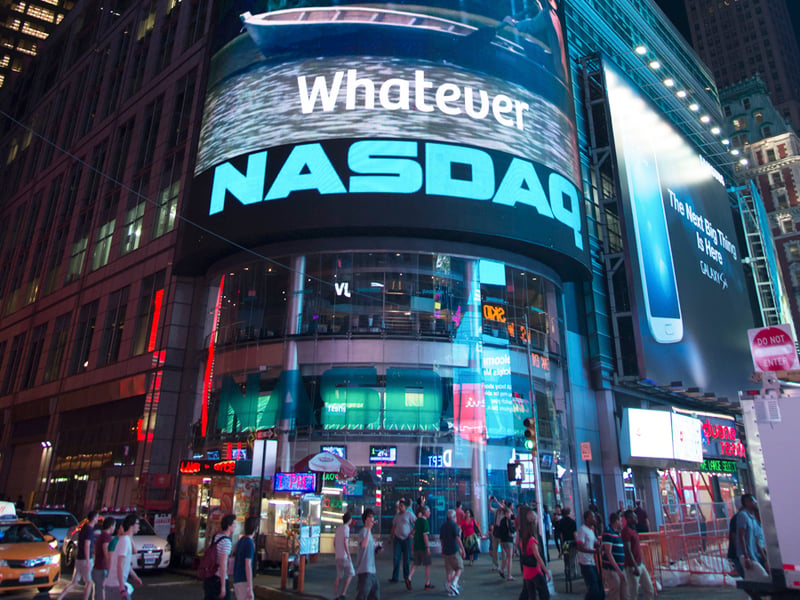Anyone who invested in the Nasdaq Composite Index on March 9, 2000, and then somehow held on for 15 years, is now slightly positive on that investment. The well-known tech stock barometer has finally reached a new all-time high but the response from advisers and market watchers has been less than celebratory.
One reason is that as painful as being ahead only slightly after 15 years might sound, the reality for most investors and lot of financial advisers was probably even more painful. That's because most investors were buying all the way to the top of the 2000 dot-com bubble, and then started selling on the way down.
While the memory of the tech bubble and its crushing collapse was followed by the more-abrupt 2008 collapse of the real estate bubble, many advisers still view 2000 as the first big wake-up call that while diversification counts, the 'set it and forget it' strategy doesn't really work.
“There's something to be said for diversification, but diversification alone won't save you,” said John Fowler, a wealth manager with McElhenny Sheffield.
Although he acknowledges that the 2,579-stock Nasdaq of today is a far cry from the index of 2000, when barely profitable startups traded at 200 times earnings, Mr. Fowler said the tech bubble is still a good reminder of how downside risk can unfold.
“When you have a defined stop-loss policy, it can help you avoid those cycles where it takes 15 years to break even,” he said. “As far as the Nasdaq finally getting back to where it was in 2000, I think it's a non-event.”
The Nasdaq Composite Index, represented by the $580 million Fidelity Nasdaq Composite ETF (ONEQ) — the only exchange-traded fund that tracks the entire index — is up 7.3% this year through Monday, and 25.7% over the past 12 months, nearly doubling the performance of the S&P 500 over both time periods.
ONEQ wasn't launched until 2003, but
last week, the underlying index crested its March 9, 2000 high of 5,046.
The more popular $40.1 billion PowerShares QQQ ETF (QQQ), which tracks the Nasdaq 100 Index, or the 100 largest nonfinancial stocks in the larger index, is still just shy of reaching its peak from 2000. The
ETF is up 7% so far this year, and 29.4% over the past 12 months.
JUST A NUMBER
As much as is being made of the Nasdaq's twin peaks, 15 years apart, most financial advisers are shrugging off specific comparisons for a litany of reasons.
“I think it's just a number,” said Phil Blancato, chief executive of Ladenburg Thalmann Inc.
“Among the differences between today and 2000 is that back then, the average tech company had a [price-to-earnings ratio] of 150, and today it's about 29,” he added. “That shows you there's a lot more 'e' than 'p' this time around, which is one stark difference.”
While advisers who were around at the time still remember the tech bubble as a runaway market for tech stocks, the upside for such stocks since the bubble burst has been less impressive.
According to Mr. Blancato, from the trough 13 and a half years ago through the start of this year, the “Nazz,” as it is commonly known, saw an annualized return of just 1.41%, compared with a 4.14% annualized return for the S&P over the same period.
Total inflation over that period was 37.5%.
“That tells me that, with regard to tech companies, we are just beginning to realize this is a market that is self-sustaining and still has upside potential,” Mr. Blancato said. “Valuations matter today more than ever, and you can't just be a one-trick pony on stocks anymore.”
John Ulin, managing principal at Ulin & Co. Wealth Management, has fond memories of the fallout from the tech bubble because he started his business the following year, in 2001.
“It was a great time to start a business right after people had lost half their assets,” he said. “I usually find more clients during negative market environments because people are doubting what they've been doing.”
But, like the 2008 housing bubble, Mr. Ulin said the tech bubble was largely the result of lax regulations and performance chasing.
“We tell our clients to not lose sleep about the Nasdaq again passing the 5,000 milestone as it did 15 years ago right before the dot-com bubble burst,” he said.
As often happens in times of extreme market turmoil, there were a number of
teachable moments for financial advisers.
'YOU DON'T GO BROKE TAKING PROFITS'
Among them, was the value of diversification and regular rebalancing, according to Charles Sachs, president of Private Wealth Counsel.
“I remember trimming positions back then, but I didn't trim enough,” he said. “One of the lessons I learned from the late '90s is that you don't go broke taking profits.”
Mr. Sachs admits he didn't like taking profits on positions and then watching the prices continue to climb.
“Seeing that train leave without you was painful,” he said. “But rebalancing is the only way to deal with a market like that,” he added. “Now we trim as it moves up and up and up, even though the market today is clearly different from how it was 15 years ago.”
For all practical purposes, the current Nasdaq level really is, as many advisers put it, just a number.
In the context of a consumer price index that is 36% higher than it was 15 years ago, and a gross domestic product that is 69% higher, David Haraway, principal at Sustainable Financial, called the current Nasdaq level “a yawn.”
Factoring current CPI and GDP data, Mr. Haraway said the Nasdaq would have to reach between 6,870 and 8,000 to have comparable significance of the 2000 mark.
“I just don't consider it has a record, by any stretch,” he said. “If anything, it might make the retail investor fearful, which is good for the professional.”







